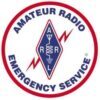KNW-161
Antenna Polarization
Based on an article by Steve Decho – NE6FX
Modified and added to 12/2016 by Earl Pack
This is a short refresher course on antenna polarization. A transmitted radio wave consists of an electric field and a magnetic field which are 90 degrees apart, or “orthogonal”, radiating outward from the antenna. Polarization refers to the alignment of the electric field relative to the Earth’s horizon. An antenna has “horizontal” polarization if the E-field is parallel to the horizon and “vertical” polarization if the E-field is perpendicular to the horizon. It is critical to match the polarization of the transmitting and receiving antennas since a 45 degree mismatch causes a 3 dB loss and a 90 degree mismatch can result in losses exceeding 20 dB.
You are probably most familiar with vertical polarization since this is the natural orientation of vehicle-mounted antennas and hand-helds properly positioned with the whip straight up. Most base station antennas for VHF and UHF, from the simple quarter-wave whip to the high-gain, omni-directional antennas used by repeaters are vertically polarized. So are the antennas for AM and FM broadcast stations (FM changing from horizontal to vertical after AM/FM Band auto radios became widespread).
Horizontal polarization is used for over-the-air TV signals. Some of us remember and may still use, the multi-element Yagi TV antennas that we would point at the broadcast site before homeowner’s associations banned them and cable and satellite TV became ubiquitous. In ham use, a wire dipole suspended between uprights or a multi-band HF beam antenna are horizontally polarized. Here, the antenna elements are parallel to the horizon and are suspended above the ground. Most of the multi-element beam antennas for VHF and UHF can be oriented on the support mast for either vertical or horizontal polarization. Vertical is the best choice if you are trying to reach distant repeaters. Since atmospheric and background noise tends to be vertically polarized, horizontal is often chosen for weak-signal DX’ing.
The polarization of a radio signal keeps its orientation in free space but will become distorted by obstructions such as buildings, mountains, vehicles, etc. There is no guarantee what will happen to a handy-talkie signal from inside a metal car even when properly held. In the case of ham HF operation, both vertical omni-directional and horizontal di-pole or beam antennas are used. When HF signals are reflected by the ionosphere back to earth (and often several times over great distances) the original polarization becomes hopelessly distorted. Therefore, the choice of antenna type is more an issue of cost and esthetics than polarization considerations. Verticals are cheaper, self-supporting and radiate omni-directionally (some say equally poorly) in all directions. Horizontal dipoles are cheaper but require vertical supports at the ends and have a fixed directionality maximally perpendicular to the wires. The best and of course the most expensive choice for DXing is a tower mounted, multi-element, single or multi-band horizontal Yagi beam antenna with rotator at least 50’ high. Not only will you make the most DX radio contacts from North to South Poles and everywhere in between but you’ll give the neighborhood birds an interesting place to rest.
Note that signal jamming equipment antennas are also polarized, most often in the vertical plane for UHF and VHF. So, if you suspect that jamming may be occurring, try turning your antenna orientation at both the transmitting and receiving stations by 90 degrees to a horizontal orientation. You may find that your signal is no longer jammed or that the jamming signal is attenuated to an acceptable level.
That concludes tonight’s training. If there are there any questions, comments or suggested additions to this material, please come now.
Thanks, this is (callsign) clear to net control.
